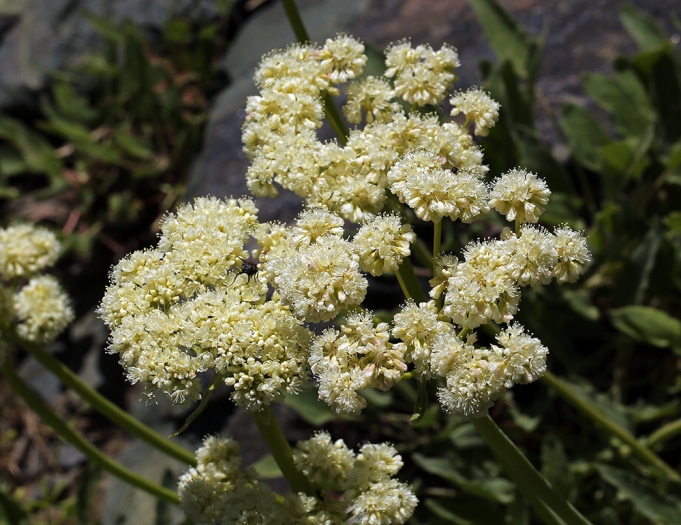Arrowleaf Buckwheat
(Eriogonum compositum)
Arrowleaf Buckwheat (Eriogonum compositum)
/
/

Steve Matson
CC BY 4.0
Image By:
Steve Matson
Recorded By:
Copyright:
CC BY 4.0
Copyright Notice:
Photo by: Steve Matson | License Type: CC BY 4.0 | License URL: http://creativecommons.org/licenses/by/4.0/ | Rights Holder: Steve Matson | Publisher: iNaturalist | Date Created: 2017-07-14T12:35:43-07:00 |
























Estimated Native Range
Summary
Eriogonum compositum, commonly known as Arrowleaf Buckwheat, Heartleaf Buckwheat, or Northern Buckwheat, is a semi-deciduous perennial herb native to the dry, open areas of the Pacific Northwest, including grasslands, rocky outcrops, and sagebrush deserts. It is often found at a range of elevations from lowlands to alpine zones. This plant exhibits a moderate growth rate and typically reaches a height and width of 1.5-2.5 feet (0.46-0.76 meters). The foliage is notable for its arrow-shaped leaves, which are green on top and white to gray underneath due to a dense layer of hairs. Eriogonum compositum produces clusters of small, showy flowers that can be yellow or white, blooming in the summer and attracting a variety of pollinators.
Arrowleaf Buckwheat is valued for its drought tolerance and ability to thrive in poor soils, making it an excellent choice for xeriscaping and naturalistic plantings. Its showy flowers and distinctive foliage add visual interest to rock gardens, borders, and native plant gardens. It requires minimal maintenance once established, needing only full sun and well-drained soils, preferably clay, loam, or sandy with low water requirements. While generally disease-free, it can be susceptible to root rot if overwatered. Arrowleaf Buckwheat is also used in restoration projects due to its ability to stabilize soils and support native wildlife.CC BY-SA 4.0
Arrowleaf Buckwheat is valued for its drought tolerance and ability to thrive in poor soils, making it an excellent choice for xeriscaping and naturalistic plantings. Its showy flowers and distinctive foliage add visual interest to rock gardens, borders, and native plant gardens. It requires minimal maintenance once established, needing only full sun and well-drained soils, preferably clay, loam, or sandy with low water requirements. While generally disease-free, it can be susceptible to root rot if overwatered. Arrowleaf Buckwheat is also used in restoration projects due to its ability to stabilize soils and support native wildlife.CC BY-SA 4.0
Plant Description
- Plant Type: Shrub, Herb
- Height: 1.5-2.5 feet
- Width: 1.5-2.5 feet
- Growth Rate: Moderate
- Flower Color: White, Yellow
- Flowering Season: Spring, Summer
- Leaf Retention: Semi-deciduous
Growth Requirements
- Sun: Full Sun
- Water: Low
- Drainage: Fast, Medium
Common Uses
Butterfly Garden, Drought Tolerant, Low Maintenance, Rock Garden, Showy Flowers
Natural Habitat
Native to the dry, open areas of the Pacific Northwest, including grasslands, rocky outcrops, and sagebrush deserts
Other Names
Common Names: Heartleaf Buckwheat, Northern Buckwheat
Scientific Names: , Eriogonum compositum, Eriogonum compositum, Eriogonum compositum subsp. typicum, Eriogonum compositum var. citrinum, Eriogonum compositum var. pilicaule, Eriogonum heracleoides var. simplex, Eriogonum heracleoides var. simplex, Eriogonum johnstonii, Eriogonum pilicaule,
GBIF Accepted Name: